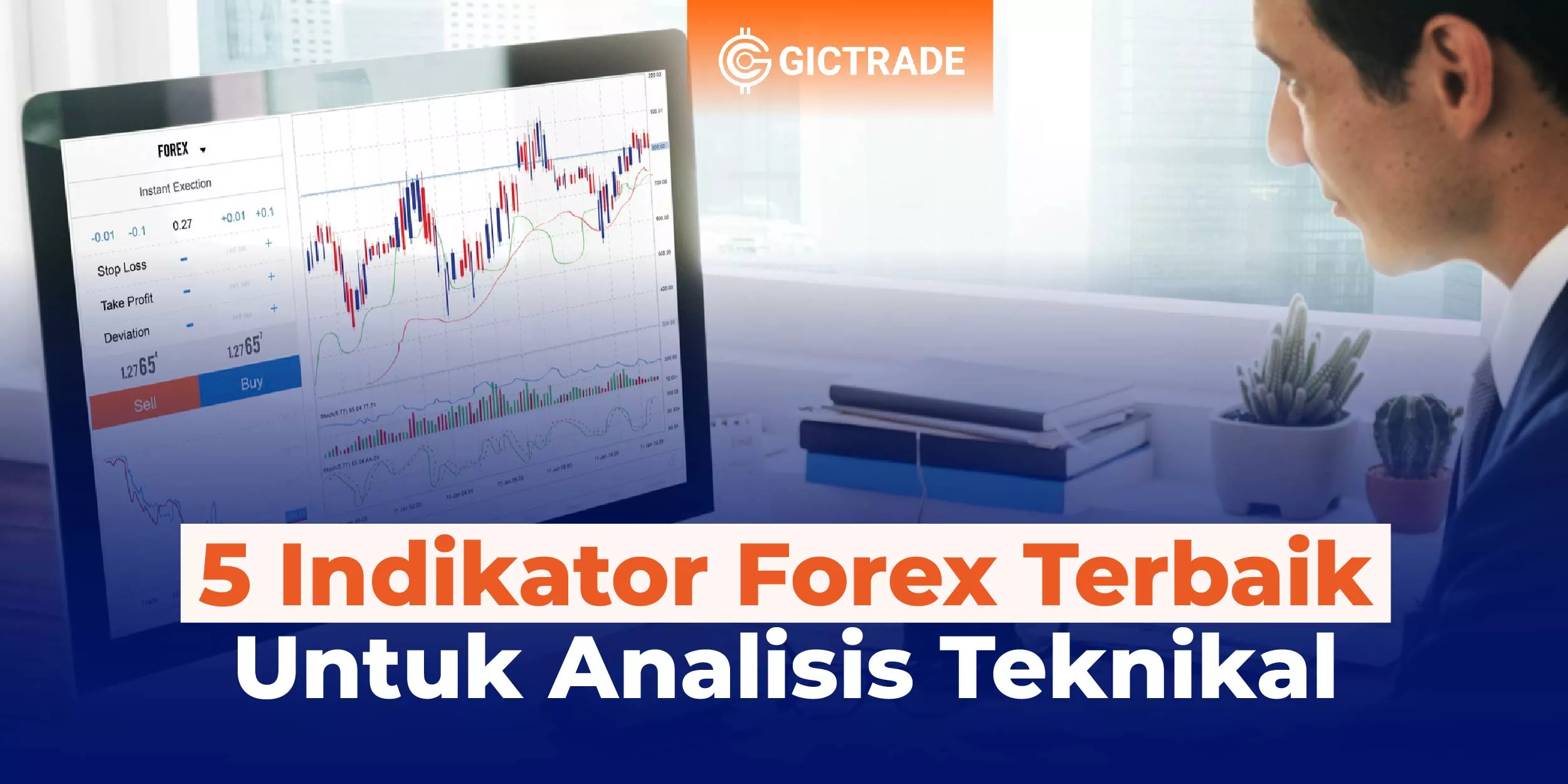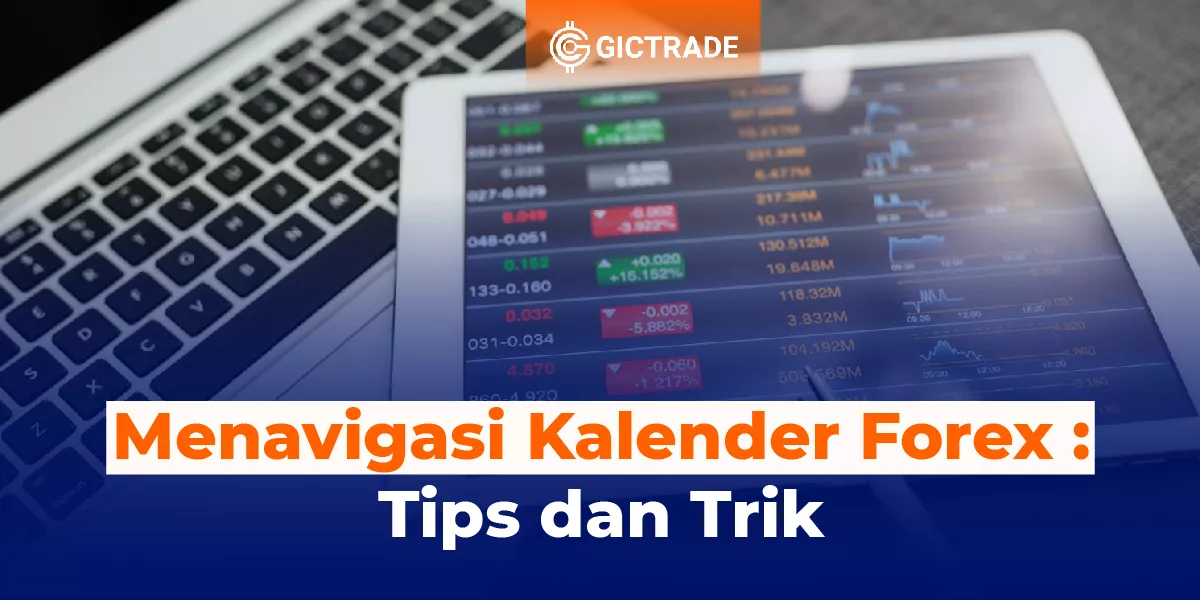Best Forex Indicators For Technical Analysis- Forex trading is the activity of buying and selling foreign currencies with the aim of profiting from changes in exchange rates. In forex trading, technical analysis is essential to help traders identify trends and patterns of price movements that can signal a reversal or continuation of the trend.
In technical analysis, there are various forex indicators that are used to help identify potential trading opportunities. In this article, we will discuss the five best forex indicators that are often used by traders for technical analysis

Table of Contents
Introduction
Before we discuss the best forex indicators, it is important to understand the basic concepts of technical analysis. Technical analysis involves studying historical price and volume data to identify patterns and trends in future price movements.
The Importance of Technical Analysis in Forex Trading
Technical analysis is important in forex trading because it can provide valuable insights into the possible direction of future price movements. By using the right forex indicators, traders can make more informed and rational trading decisions.
Understanding Forex Indicators
Forex indicators are statistical tools used to analyze price and volume data. These indicators can help traders identify trends, momentum, market strength, and overbought or oversold conditions. Here are five of the best forex indicators that are often used by traders:
1. Moving Average (MA)
Moving Average (MA) is a simple indicator that calculates the average price over a period of time. The MA can help traders identify the direction of the trend that is happening. There are several types of MAs, including the Simple Moving Average (SMA) and the Exponential Moving Average (EMA).
The use of the MA in technical analysis is to pay attention to the crossover between the price and the MA line. If the price moves above the MA, it indicates an uptrend, while if the price moves below the MA, it indicates a downtrend.
2. Relative Strength Index (RSI)
Relative Strength Index (RSI) is a momentum indicator used to measure the strength and weakness of price. The RSI ranges from 0 to 100 and can give signals of overbought or oversold. If the RSI is above 70, it indicates that the market has been overbought, and the price may experience a downward correction. Conversely, if the RSI is below 30, it indicates that the market has been oversold, and the price may experience an upward correction.
3. Bollinger Bands
Bollinger Bands is a volatility indicator consisting of three lines, namely the upper band, middle band, and lower band. The middle band is the Simple Moving Average (SMA), while the upper band and lower band are the two standard deviations above and below the middle band. Bollinger Bands are used to measure market volatility and help traders identify overbought or oversold conditions. If the price is close to the upper band, it indicates that the market has overbought, while if the price is near the lower band, it indicates that the market has been oversold.
4. MACD (Moving Average Convergence Divergence)
MACD (Moving Average Convergence Divergence) is a trend indicator that combines a moving average with the difference between two moving averages. This indicator consists of two lines, namely the MACD line and the signal line. A commonly used trading signal with the MACD is when the MACD line crosses the signal line from bottom to top, it indicates a buy signal, whereas if the MACD line crosses the signal line from top to bottom, it indicates a sell signal.
5. Fibonacci Retracement
Fibonacci Retracement is an indicator based on a series of Fibonacci numbers. This indicator is used to identify potential support and resistance levels in price movements. Using Fibonacci Retracements, traders can identify retracement levels that may be areas of strong support or resistance. Traders can use these levels as a reference to make better trading decisions.
Conclusion
In forex trading, technical analysis is key to identifying potential trading opportunities. In this article, we have discussed the five best forex indicators that can be used in technical analysis, namely the Moving Average (MA), Relative Strength Index (RSI), Bollinger Bands, MACD (Moving Average Convergence Divergence), and Fibonacci Retracement.
The use of these forex indicators can help traders recognize trends, momentum, and market conditions more accurately. However, it is important to remember that no single indicator can provide perfect trading signals. Traders need to combine indicators with other analysis and experience to make informed trading decisions.
Not familiar with GIC? Let's get acquainted. Unlike other conventional brokerage firms, GIC through the GICTrade platform provides a solution for traders who do not want to be charged with high trading fees.
GICTrade is a peer-to-peer trading platform that brings together traders and market makers. Traders will benefit from the absence of commission fees and low swap fees and spreads due to the presence of market makers as liquidity providers.
You can also join the trader community on GICtrade's Telegram to ask fellow traders directly about their trading experience. In addition, on YouTube GIC, traders can also learn to trade for free! What are you waiting for?
| Also Read : Technical vs Fundamental Analysis: Which is Better? |
FAQs (Frequently Asked Questions)
- Do I need to use all these indicators in forex trading?
No, you don't need to use all of these indicators. Choose an indicator that suits your trading style and use it wisely.
- What is the best time period for the Moving Average indicator?
The time period used for the Moving Average may vary depending on your preference. Some traders use MAs with periods of 50 or 200, while others may use shorter periods.
- What is the difference between the Simple Moving Average (SMA) and the Exponential Moving Average (EMA)?
The main difference between SMA and EMA lies in their calculation method. The SMA calculates the average price over a given period of time simply, while the EMA gives more weight to the current price.
- How to use the Bollinger Bands indicator?
To use the Bollinger Bands indicator, pay attention when the price is close to the upper or lower band. If the price is close to the upper band, it indicates the possibility that the market has been overbought. Conversely, if the price is close to the lower band, it indicates the possibility that the market has been oversold.
- What should I look out for when using the Fibonacci Retracement indicator?
When using the Fibonacci Retracement indicator, pay attention to the retracement levels that may be areas of support or resistance. Focus on the levels that are most often tested by price and use this information in your trading decisions.
- Can this forex indicator be used for all currency pairs?
Yes, this forex indicator can be used for all currency pairs. However, it is important to pay attention to the characteristics and volatility of each currency pair in the use of indicators.
- Are there any other indicators to consider in forex technical analysis?
In addition to the indicators discussed in this article, there are many other indicators that can be used in forex technical analysis, such as the Stochastic Oscillator, Average True Range (ATR), and many more. Develop your knowledge of indicators and experiment with those that suit your trading style.
- How can I learn more about technical analysis and forex indicators?
There are many learning resources available, including books, online courses, and trader community forums. Dedicate your time to learning and practicing using forex indicators in a simulated trading environment before jumping into a live account.
- Can I rely entirely on forex indicators in my trading decisions?
No, forex indicators should be used as a tool in trading decision-making. Keep combining indicators with other analysis, an understanding of market sentiment, and good risk management to get more consistent trading results.
- Are there any specific trading strategies that can be used with this forex indicator?
There are various trading strategies developed based on the use of these forex indicators. You can learn these strategies through literature, online sources, or by interacting with a community of traders.
 Last:
Last: 







